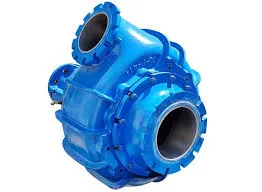Kannada
- Afrikaans
- Albanian
- Amharic
- Arabic
- Armenian
- Azerbaijani
- Basque
- Belarusian
- Bengali
- Bosnian
- Bulgarian
- Catalan
- Cebuano
- Corsican
- Croatian
- Czech
- Danish
- Dutch
- English
- Esperanto
- Estonian
- Finnish
- French
- Frisian
- Galician
- Georgian
- German
- Greek
- Gujarati
- Haitian Creole
- hausa
- hawaiian
- Hebrew
- Hindi
- Miao
- Hungarian
- Icelandic
- igbo
- Indonesian
- irish
- Italian
- Japanese
- Javanese
- Kannada
- kazakh
- Khmer
- Rwandese
- Korean
- Kurdish
- Kyrgyz
- Lao
- Latin
- Latvian
- Lithuanian
- Luxembourgish
- Macedonian
- Malgashi
- Malay
- Malayalam
- Maltese
- Maori
- Marathi
- Mongolian
- Myanmar
- Nepali
- Norwegian
- Norwegian
- Occitan
- Pashto
- Persian
- Polish
- Portuguese
- Punjabi
- Romanian
- Russian
- Samoan
- Scottish Gaelic
- Serbian
- Sesotho
- Shona
- Sindhi
- Sinhala
- Slovak
- Slovenian
- Somali
- Spanish
- Sundanese
- Swahili
- Swedish
- Tagalog
- Tajik
- Tamil
- Tatar
- Telugu
- Thai
- Turkish
- Turkmen
- Ukrainian
- Urdu
- Uighur
- Uzbek
- Vietnamese
- Welsh
- Bantu
- Yiddish
- Yoruba
- Zulu
Telephone: +86 13120555503
Email: frank@cypump.com
ನವೆಂ . 20, 2024 12:04 Back to list
'vertical turbine mixed flow and propeller pumps an overview'
Overview of Vertical Turbine Mixed Flow and Propeller Pumps
Pumps play a crucial role in various industries, serving as mechanical devices that transport fluids from one location to another. Among the various types of pumps available, vertical turbine mixed flow and propeller pumps stand out due to their unique design and operational capabilities. These pumps are predominantly used in applications involving deep water extraction, irrigation systems, and in industrial processes where moderate flow rates and high efficiency are required.
Design and Construction
Vertical turbine mixed flow pumps are distinguished by their vertical shaft configuration and multi-stage design. This arrangement allows them to efficiently lift water from deep sources, such as wells or reservoirs. The pump consists of a vertical shaft connected to a series of impellers, which are designed to provide both kinetic and potential energy to the fluid. The mixed flow design effectively combines radial and axial flow concepts, enabling the pump to generate high head and flow rates.
On the other hand, propeller pumps feature a relatively simpler design, predominantly relying on axial flow principles. They utilize one or more propeller-like impellers, fixed to the shaft, which creates a high flow rate with relatively low pressure. This design makes propeller pumps ideal for applications where large volumes of water need to be moved, but the head requirements are not excessively high.
Working Principle
Both vertical turbine mixed flow and propeller pumps operate on similar mechanical principles. When the motor drives the shaft, the impellers rotate, creating a low-pressure area at the eye of the impeller. This pressure differential allows atmospheric pressure to push water into the pump. As water enters the pump, the rotating impeller imparts kinetic energy to the fluid, which is then transformed into pressure energy, pushing the water out through the discharge pipe.
In mixed flow pumps, the water undergoes both axial and radial motion, resulting in increased efficiency for applications where both high flow rates and elevation gains are required. Propeller pumps, conversely, excel in scenarios demanding high flow rates, such as flood control or water drainage, but they are less efficient at generating significant pressure.
'vertical turbine mixed flow and propeller pumps an overview'

Applications
The applications for vertical turbine mixed flow and propeller pumps are diverse. Mixed flow pumps are particularly useful in water supply systems, irrigation, municipal water treatment, and certain industrial processes. Their high-efficiency capabilities at various depths make them a preferred choice for agricultural pumping applications, where the need for substantial water lifting capabilities is paramount.
Propeller pumps find their most common application in surface water movement. They are extensively used in agricultural irrigation, cooling water systems for power plants, and drainage systems in urban environments. Their ability to move large quantities of water effectively makes them suitable for flood control and emergency response situations.
Advantages and Disadvantages
Both pump types have distinct advantages and disadvantages. Vertical turbine mixed flow pumps offer higher efficiency levels and the ability to lift water from significant depths. They are particularly effective in applications where space is limited, and vertical installation is advantageous. However, they can be more complex and costly to install and maintain due to their intricate design.
Propeller pumps, while generally less complex and more cost-effective, do have limitations in terms of pressure generation and operational depth. They are primarily suited for applications that do not require extensive vertical lift.
Conclusion
In conclusion, vertical turbine mixed flow and propeller pumps are vital components in various water management applications. Their distinct designs and operational principles cater to different requirements in fluid transport. Understanding the characteristics of each pump type is essential for selecting the right pump for a given application. As water resources become increasingly strained, the efficiency and effectiveness of these pumps will continue to play a critical role in sustainable water management practices globally. Whether for agricultural, municipal, or industrial uses, the contributions of these pumps can significantly enhance operational efficiency and resource management.
-
China Small Slurry Pump Manufacturer - High Efficiency Small Centrifugal Slurry Pumps for Mining & Industry
NewsJun.24,2025
-
Custom Drilling Mud and Slurry Pump Supplier - High Efficiency, Tailored Solutions
NewsJun.10,2025
-
Supply Vertical Submersible Sewage Pump High-Efficiency WQ/QW Pumps Supplier
NewsJun.10,2025
-
Premium Sewage Ejection System & Pumps Efficient Waste Removal
NewsJun.09,2025
-
Premium Wholesale Slurry Pump Impellers Durable & Efficient Slurry Handling
NewsJun.09,2025
-
Top Sewage Pump Companies Durable Industrial Solutions for Efficiency
NewsJun.09,2025










